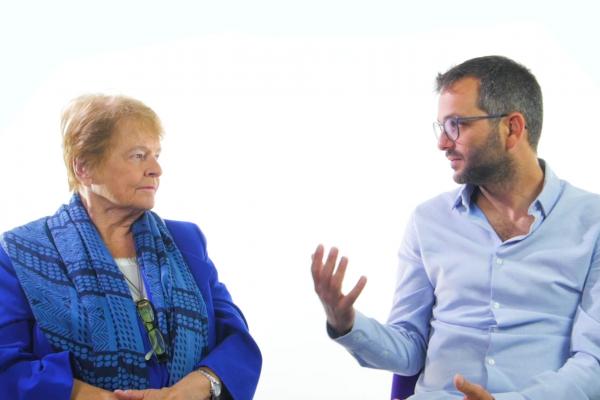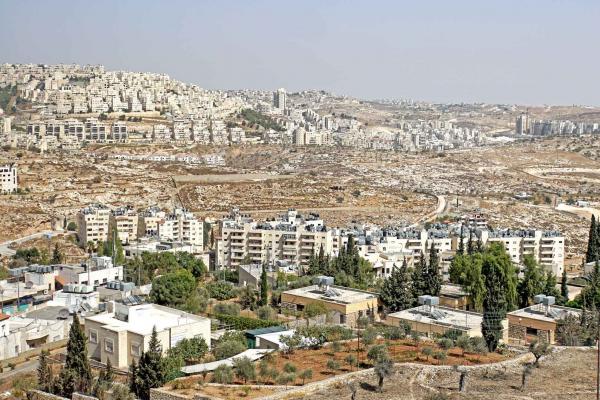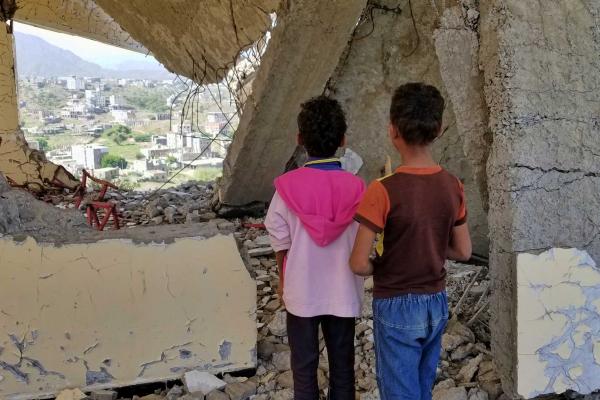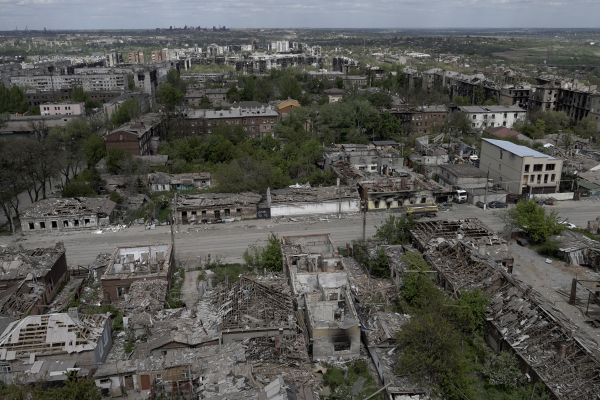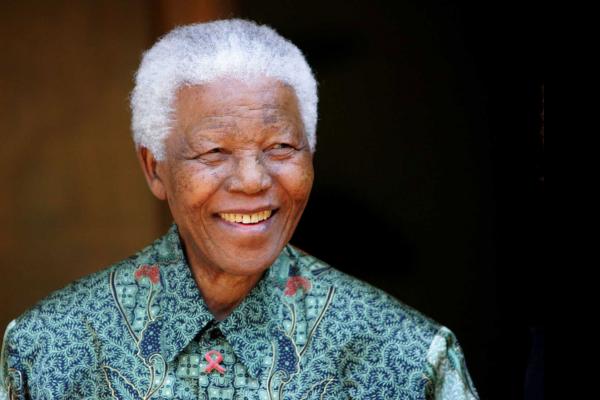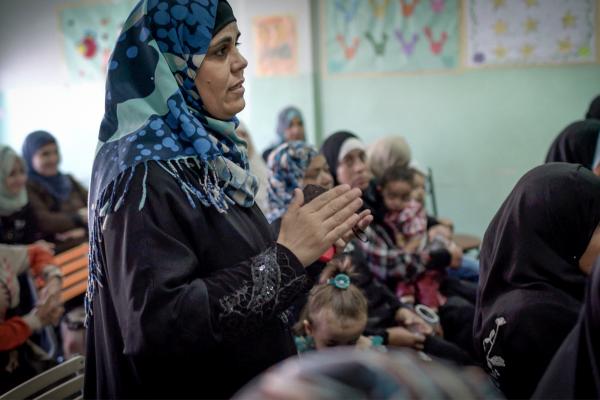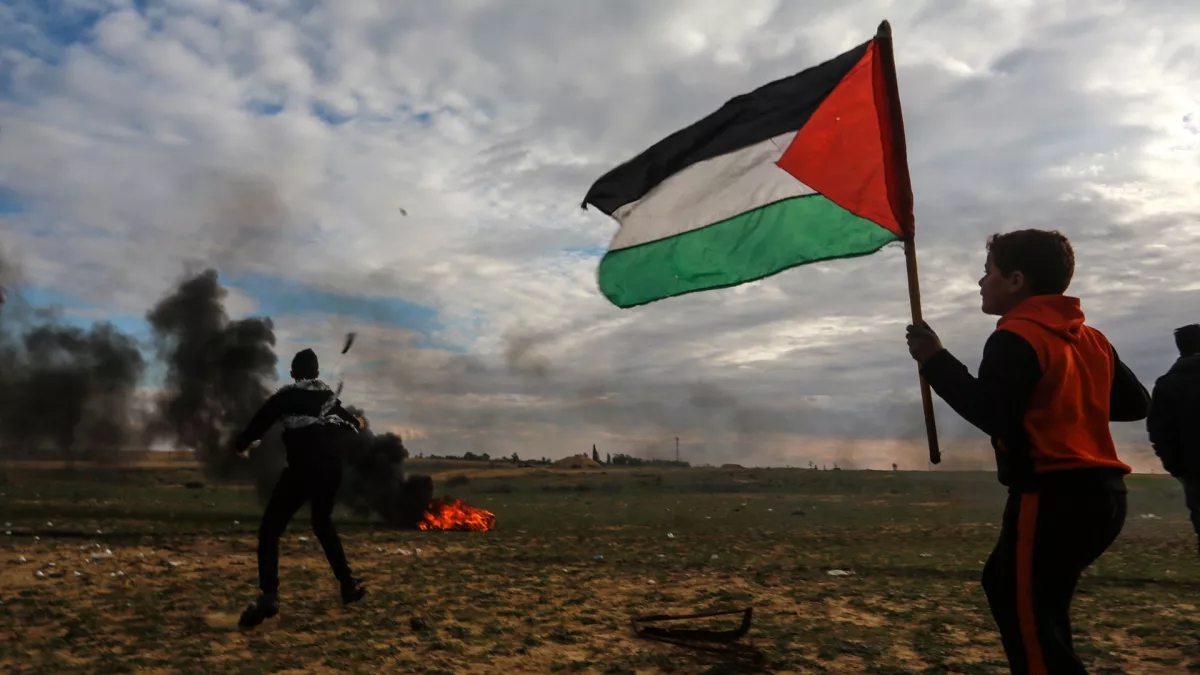
The Elders’ Head of Programmes, Jane Kinninmont, writes on Palestinian youth perspectives that were highlighted in a recent virtual dialogue, held as a collaboration between The Elders and The Carter Center.
The Israeli-Palestinian conflict, traditionally seen as the central conflict in the Middle East, had dropped down the international policy agenda in recent years as progress seemed impossible and as other regional conflicts became far more violent. This year, however, the US president’s “vision for peace”, which largely adopts Israeli positions on the core conflict issues, and Benjamin Netanyahu’s related announcement that he would annexe large parts of the occupied West Bank from July this year, have refocused international attention on the conflict and occupation.
In recent weeks there has been worldwide mobilisation against annexation, uniting a disparate set of Jewish diaspora groups and scholars, former Israeli security officials, church leaders, US Democrats, European policymakers, and current and former world leaders, including Arab countries who want peace with Israel and see this as a potential dealbreaker. Trump’s rival in the 2020 election, Joe Biden, has said that annexation would “choke off” any hopes of peace. The international community is throwing its weight behind the idea of the two-state solution with an energy and commitment not seen for years. But can it find a constructive and realistic path to deliver two states?
Palestinians seek new directions
The Elders and The Carter Center recently convened a virtual dialogue with Palestinian activists from across the different geographies of the West Bank, Gaza, East Jerusalem and inside Israel. The discussions highlighted the pressing need for a Palestinian national dialogue on the future of their national movement in the context of annexation and other threats to the two state solution. Such a dialogue should go beyond the usual political elites, to include often excluded groups such as diaspora Palestinians, refugees in the region’s camps, and of course young people.
These conversations highlighted the under-representation of Palestinian youth and civil society perspectives in policy discussions that all too often revolve around competing accounts of what happened in previous rounds of high-level negotiations, and the associated blame game. They also raised a fundamental question about the viability of the longstanding direction of the Palestinian national movement.
This is one of the world’s longest running conflicts. It is dogged by competing narratives of history, which for some stretch back even to biblical times. Much of the international policy debate on the topic is led by people who are deeply familiar with three decades of negotiations and the specialist jargon that they have produced.
Meanwhile, most Palestinians are under thirty. Compared with their parents and grandparents, young Palestinians are the least likely to believe in the two state solution. Many of them say that as far as they are concerned, annexation has been happening gradually for years. With the Palestinian-administered areas in the West Bank already divided and fragmented by settlements and areas of Israeli military control, numerous young Palestinian activists believe the Palestinian movement should focus on obtaining equal rights within a single state, as they do not see any possibility of separate Palestinian and Israeli states becoming a reality.
They are also less likely than their older counterparts to trust their own leaders, and they want more respect for rights and freedoms from their own authorities as well as from Israel. Some argue they’ve been ill-served by a political system centred, as elsewhere in the Arab world, on one male leader and call for a more distributed leadership model, and for a shift to empower women leaders and incorporate feminism into national liberation.
Generational change
Policymakers working on this area need to be aware of the significant generational change that has taken place since the Oslo paradigm was established. If you are a thirty-year-old Palestinian, the Oslo Accords, which set up the Palestinian Authority and promised a path to final-status negotiations, happened when you were four. The Camp David negotiations were held when you were ten. Those final-status negotiations are still on hold.
Your president, Mahmoud Abbas, was elected when you were 15, and since then there have been no more presidential elections. The last parliamentary elections happened when you were 16, and Hamas won. Since then, there have been no more parliamentary elections either. You have never had the opportunity to vote for your leaders.
For nearly half your life the Palestinian polity has been split between the Fatah-run Palestinian Authority in the West Bank and Hamas-ruled Gaza.
Where your parents might have seen the birth of the Palestinian Authority as a real change, and as a step towards statehood, you are more likely to think the two-state solution is a myth, as you find yourself in a one-state reality where Israeli military occupation is a permanent feature of your life. You’re unlikely to have ever met any Israelis that aren’t soldiers or settlers on your ancestral land.
Your parents’ generation saw the Palestine Liberation Organisation move from being a group that the West deemed to be terrorists to one that the US and Israel negotiated with. By contrast, your generation has grown up in an era where there have been many rounds of talks, but they have repeatedly failed or petered out. Civil society groups have also spent years engaging in dialogue and reconciliation projects with Israeli counterparts, but you can’t see many results, and don’t have much appetite to repeat these projects.
Policy responses
The US “vision” for resolving the conflict speaks vaguely of prosperity for younger Palestinians as the top priority to ensure quality of life, and repeatedly suggests their leaders have let them down by not agreeing to territorial compromises at an earlier stage.
But it is disconnected from the perspectives and voices of young Palestinians, who are often cynical about their leaders, but not because they have failed to compromise with Israel. Rather, young Palestinians often see the Palestinian Authority as being too close to Israel, dependent on Israel for revenue, cooperating with it over security measures that squash legitimate dissent, and focused on administering the occupation.
Hamas is repressive in a different way. When Palestinians in Gaza have protested at the border against the occupation and in favour of the right to return, they have been cheered on by Hamas but faced a violent military response from Israel. When they have protested against their poor standards of living under Hamas rule, they have instead been cheered on by Israel (and Fatah), and violently repressed by Hamas.
Nor do young Palestinians see some supposed choice between political rights and prosperity; their ability to get a job or start a business is constrained on a daily basis by the occupation and the restrictions it places on their ability to trade or travel.
Those living in Gaza, blockaded for the past 13 years by Israel and Egypt, at times with the connivance of the authorities in Ramallah, understand this painful reality from their earliest consciousness.
While youth are less likely than older people to support the concept of the two state solution, polling suggests that two-thirds of Palestinians – across all age groups – think that the two state solution is no longer feasible, even if it is desirable, because of the extent of Israeli settlements through the West Bank.
There is no indication that Palestinians are abandoning their search for their full rights and self-determination. Rather, if annexation proceeds, it seems likely that more Palestinians will shift their activism towards equal rights in a single state.
This has long been a scenario that ardent Zionists have wanted to avoid, because in a single state, the demographics of the Arab and Jewish populations would undermine Israel’s ability to be both the nation-state of the Jewish people and a democracy. It is therefore ironic that a movement towards a single state seems to be one of the logical consequences of current annexation plans, and of the broader failure to enable a two state solution.

